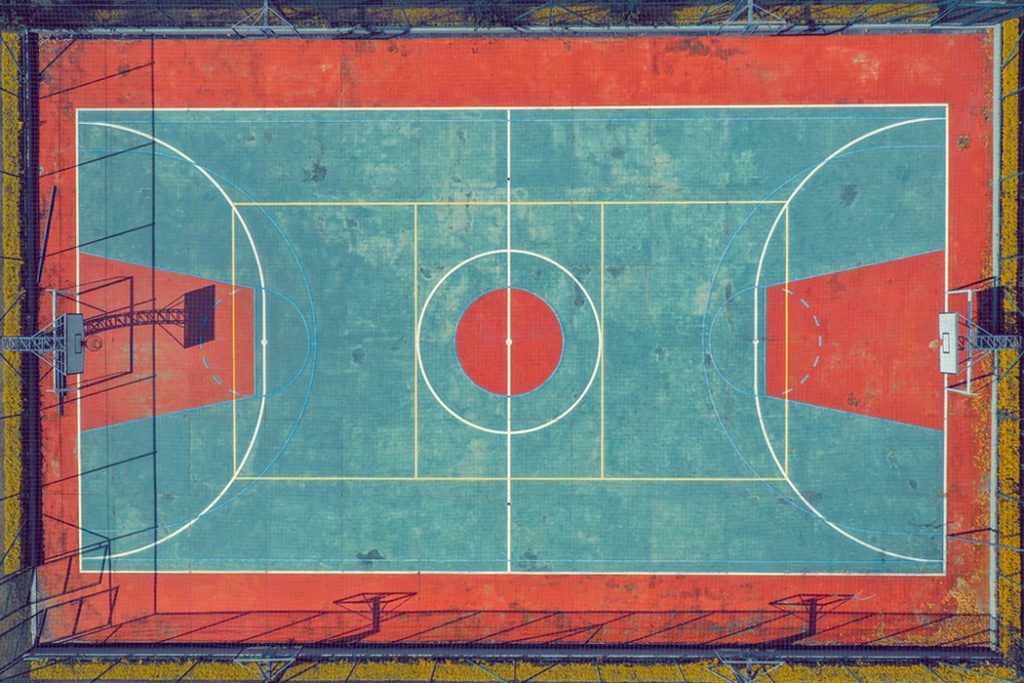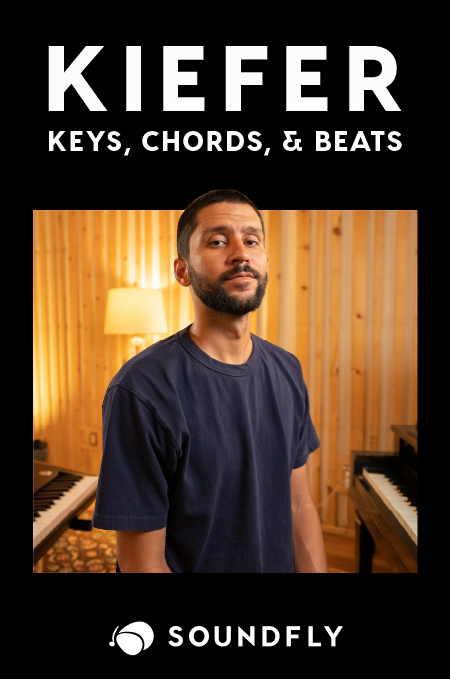
+ Welcome to Soundfly! We help curious musicians meet their goals with creative online courses. Whatever you want to learn, whenever you need to learn it. Subscribe now to start learning on the ’Fly.
Even if you’re not a basketball fan, you can learn from the NBA.
That goes even further if you’re a musician, songwriter, or producer. Because the league has changed a lot over the decades and it continues to shift, these shifts can actually teach us (musical folks) about succeeding as independent musicians in today’s also shifting music industry.
Let’s talk about how. But first, just in case you’re not familiar with the sport of basketball, let’s do a real quick Basketball 101 lesson.
There are five players from each team on a basketball court at one time. They are:
- Point guard
- Shooting guard
- Small forward
- Power forward
- Center
Traditionally, their height and sizes are relative to their positions — point guard being the smallest, center being the tallest, etc. Here’s the traditional role of each position…
- The point guard is like the captain of the team. He runs the offense. He’s expected to be a great ball handler, a selfless passer, and have a high basketball IQ.
- The shooting guard is one of the main scorers on the team. Traditionally, the SG has to be a good long-range shooter but also be able to drive to the hoop with impeccable ball-handling skills.
- The small forward is typically a great long-range shooter and also a strong defender.
- The power forward is usually the second tallest player on the team and scores most of his points close to the rim.
- The center, like the PF, scores most of their points close to the basket. They’re usually the tallest and strongest player on the team.
However…
There’s this idea that the NBA has become a “positionless” game in the last few years — whereby more players at different positions around the court are scoring more points on average — and that’s likely due to a new value placed on versatility, over players who specialize in their specific position.
What does this mean?
Centers don’t just play close to the hoop, now they have to be able to shoot mid-range or even long-range shots. Shooting guards aren’t just shooters anymore, they have to take their defenders one-on-one. Point guards aren’t always the shortest player on the team and they don’t always run the offense.
Now, what the heck does this have to do with being a musician?
Why Do You Need to Be Positionless?
Versatility. That’s the theme here. In the same way NBA players have to be more versatile and “positionless,” you have to be a versatile musician. You’ll be much more successful and fulfilled if you can have an arsenal of skills rather than just one.
So instead of only being a songwriter, learn the basics of recording too. Instead of only performing live, become a studio musician and give instrument lessons. Instead of only producing music, teach others what you know through blog posts and online courses.
The point is, today’s music industry demands versatility. To really get ahead, you have to diversify your skills and, therefore, your music income.
+ Read more on Flypaper: “The “Plus, Minus, Equal” Approach to Achieving Success in Music.”
How to Become a Versatile Musician
Here are three practical things you can do to become a more versatile (“positionless”) musician…
1. Settle on Three Big Ideas for Your Career
What three aspects of music do you want to be a part of your music career?
For example, I’m focusing on producing music, sync licensing, and sharing what I know with other musicians. I want these three big ideas to mark my career. They also clearly tell me where my income streams come from.
2. Choose Avenues That Lead to Your Big Ideas
Once you’ve got your three big ideas, find avenues (platforms, methods, collaborators, etc.) that will help you pursue those aspects of your music. So, using myself as an example, here’s how that looks:
- Producing: grow my SoundBetter presence and network with other musicians in Facebook groups.
- Sync licensing: continue working with the 2-3 sync companies/libraries I’m a part of, and keep submitting music to music supervisors.
- Music advice content: write helpful blog posts (like this one!) and grow my blog for musicians.
I suggest keeping it to a maximum of three avenues per big idea, just so you don’t get too overwhelmed.
3. Focus on Today
Once you’ve got your three big ideas and your corresponding avenues, it’s time to get to work.
Just focus on what you can do today to move forward. If you only have time for one small task today, just do it. Stay consistent, even if your steps are small. Pretty soon, you’ll become a more versatile musician. And you’ll be adapting to today’s positionless music industry.
Don’t stop here!
Continue learning with hundreds of lessons on songwriting, composing, home recording, electronic production, beat making, and much more. Explore Soundfly’s exciting courses like Modern Pop Vocal Production, Unlocking the Emotional Power of Chords, and Kimbra: Vocal Creativity, Arranging, and Production.




